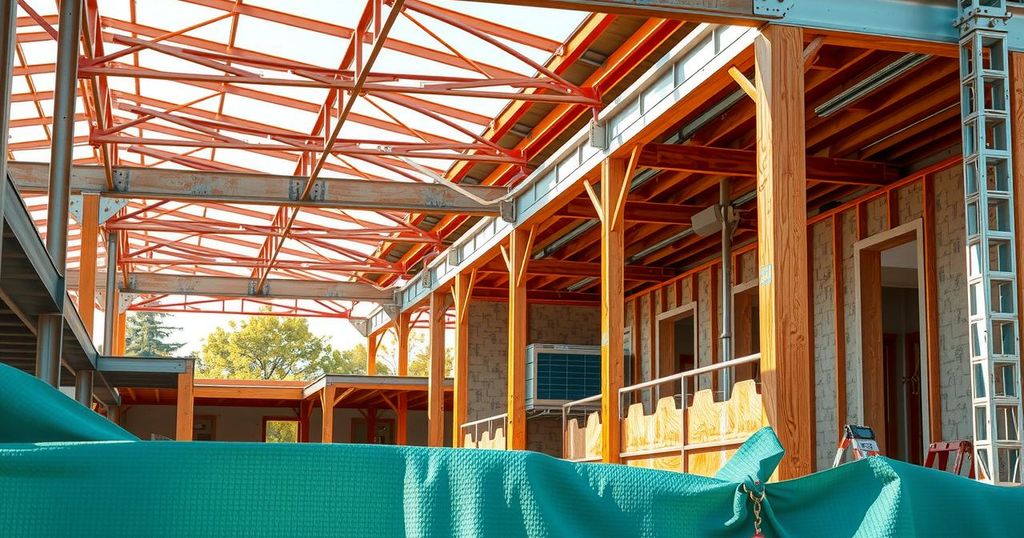Mexico’s Housing Sector Facing Challenges from U.S. Tariffs

Mexico’s housing construction costs may rise 3-4% due to U.S. tariffs on steel and aluminum. While investment remains steady, developers are cautious amid concerns about prolonged tariff impacts on the housing sector and employment. The country faces a housing shortage of eight million homes, prompting government initiatives to increase construction.
The Mexican housing sector is poised for potential increases in construction costs, with estimates suggesting a rise of 3 to 4% this year as a direct result of the 25% tariffs imposed by the United States on steel and aluminum imports. The Mexican Chamber of the Construction Industry (CMIC) announced these projections following the tariffs instituted on March 11, which primarily affect Mexico, Canada, and Brazil. Furthermore, there are concerns that additional tariffs on other Mexican goods could follow in early April, exacerbating cost challenges.
Carlos Eduardo Ramírez Capó, president of the National Chamber of the Housing Development and Promotion Industry (Canadevi), indicated that while investment in housing projects remains steady, developers are exercising increased caution due to the tariffs. He emphasized, “The damage will be directly proportional to the duration of the tariffs if it is imposed,” which highlights the uncertainty surrounding potential prolonged trade tensions.
Rodrigo Padilla Quiroz, CEO of the Mexican Real Estate Bank (BIM), noted that although no housing projects have been canceled thus far, caution prevails among developers. He pointed out that beyond the rising costs of materials, there are broader implications for employment in the construction sector. Padilla remarked, “The biggest concern is a slowdown in [domestic] employment,” indicating that the tariffs could ultimately diminish Mexicans’ purchasing power and their ability to accumulate property wealth.
There is also a significant housing shortage in Mexico, estimated at around eight million homes. The construction of new homes reached its lowest level since 2013 in 2024, with only 128,147 units built. Notably, 33.62% of these newly constructed homes were designated as low-income, averaging about 521,484 pesos (US $26,000) in value. To address this crisis, President Claudia Sheinbaum announced plans to build one million new homes over the next six years, involving an investment of 600 billion pesos (US $29.7 billion).
Data from Argus Media highlights a decrease in steel production in Mexico, from 19.85 million tonnes in 2023 to 18.2 million tonnes in 2024, driven by lower demand. Furthermore, while Mexican steel mills strategize to enhance production capacity by over five million tonnes annually by 2026, the sluggish domestic market and diminishing overseas demand could pose additional challenges.
In conclusion, the imposition of U.S. tariffs on steel and aluminum imports is anticipated to have significant implications for Mexico’s housing sector, with potential cost increases and caution among developers. The ongoing housing shortage necessitates urgent governmental response, exemplified by proposed investments to stimulate construction. Overall, ongoing trade policies and their ripple effects on employment represent critical issues for the industry and the broader economy.
Original Source: mexiconewsdaily.com








